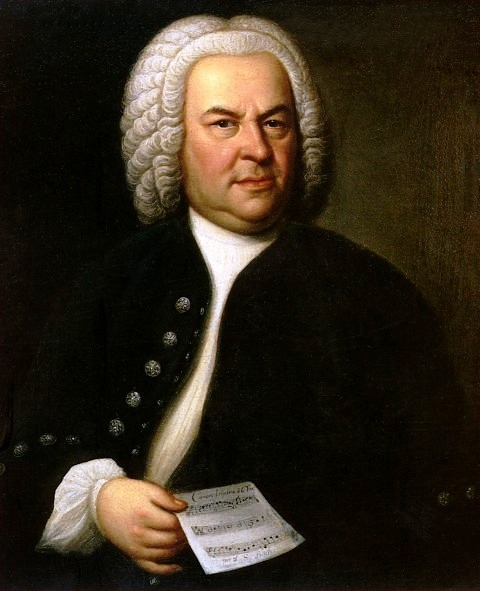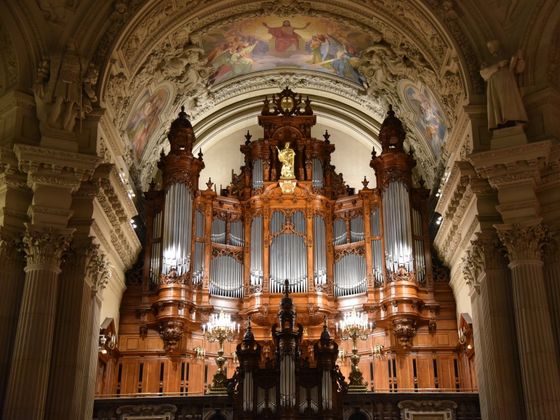German Organ Craftsmanship: an Official UNESCO Intangible Cultural Heritage of Humanity
Germany has a rich history of ecclesiastical organ music written by famous composers like Beethoven, Bach, Händel and other well-known classical musicians. Much of the most well-known organ music stems from the Baroque period (17th-18th Century). Organ music was quite popular because church was an important pillar of the community where audiences could gather to listen and be inspired by the intensity and lofty sound of this highly complex musical instrument.

Johann Sebastian Bach
According to the UNESCO website, ‘Organ craftsmanship and music has shaped Germany’s musical landscape and instrument-making for centuries….The highly specialized knowledge and skills related to the practice have been developed by craftspeople, composers and musicians working together throughout history, and the specialized…skills are significant markers of group identity. Transcultural by its very nature, organ music is a universal language that fosters interreligious understanding.’ (unesco.org) This is why UNESCO declared German organ craftsmanship an intangible cultural heritage of humanity in 2017.
No Two Organs Are Alike; A Short History of Organ Building in Germany
Organs are always built individually to fit into the environment for which they are created. So every organ is essentially unique and built to serve a special purpose. Each organ consists of some combination of keyboard(s), pipes, blowers that supply the wind chests (where air is kept at a certain pressure usable on demand), valves that open and shut the flow of air flow into the pipes, pedals and other more technical parts too difficult for description in this summary. The point is: There are many variables in the production of an organ that contribute to its uniqueness.
Historically, when organs were primarily built for use in churches, their design was thus varied according to how they were utilized as part of the liturgy.
Before the Baroque period, the art of organ building developed equally across Europe. After the Reformation, however, clearly separated traditions of Northern German and Southern German organ building developed. (pipedreams.publicradio.org)

At. Stephen’s Cathedral Organ in Passau
Southern German organs were built to fulfill their liturgical functions. In the North, organ music is based primarily on Lutheran hymns and its varieties in preludes, fantasies and variations. Thus for the execution of this function, northern organs needed certain solo voices and a clearly designed specification to underline the phonic compositions. Here we can perhaps interpret that Northern German organ design accented its ability to create music to ‘stand out’ for passive listening and genuflection. The Southern German organs, on the other hand, were primarily used to accompany hymns and Gregorian chants (abbey churches). The instruments were designed for more improvisation and to reinforce the orchestras in masses. Thus the Southern German organ can be described as ‘suitable to vocal music,’ with an ability to blend sounds. (ibid above)
The Most Famous Organs in Germany
The largest pipe organ in Europe is in the St. Stephen’s Cathedral in Nassau (see above). The organ was built in 1682. Today the organ consists of 5 separate organs with 17,774 pipes, 223 registers and 4 chimes. (attasobscura.com)
The most famous organ builder in Germany was Gottfried Silbermann, who is considered the Antonio Stradivari of organ makers (organhistoricalsociety.org). The last organ he built was in the Dresden Cathedral, and is considered his greatest in addition to being his largest organ. Another notable Silbermann organ is in the Freiberg Cathedral in Saxony (built 1714).

The Great Silbermann Organ in Freiberg Cathedral
And last but not least, the great Sauer Organ in Berlin, with its 7,269 pipes and 113 registers, is also a ‘must see’ for people interested in this craft.
Beyond these ‘stars’, there are many other beautiful organs in smaller cities and churches. It is always worth popping into a local church to take a look, no matter where you are, if you are visiting Germany.

Sauer Organ in the Berlin Cathedral
But the Most Famous Organs in the World Come From….The USA!
Hand on your heart: As important as historical German organ craftsmanship culture is, the USA still has the international record for building the biggest organs worldwide!
The largest pipe organ ever built was the Boardwalk Hall Auditorium Organ in Atlantic City, NJ. It weighed 150 tons and is now undergoing a $16 million renovation set for completion in 2023. (wikipedia)
Based on physical mass, the largest pipe organ in the world is the Wanamaker Grand Court Organ in Philadelphia’s Wanamaker Department Store (no longer exists), weighing in at 287 tons and officially the ‘Largest Organ in the World’, according to Guinness Book of World Records.
So the fact is: Whether bigger is better or heritage is the heirloom, the history of organ craftsmanship is complex and worth learning more about.
Sources:
Wikipedia
